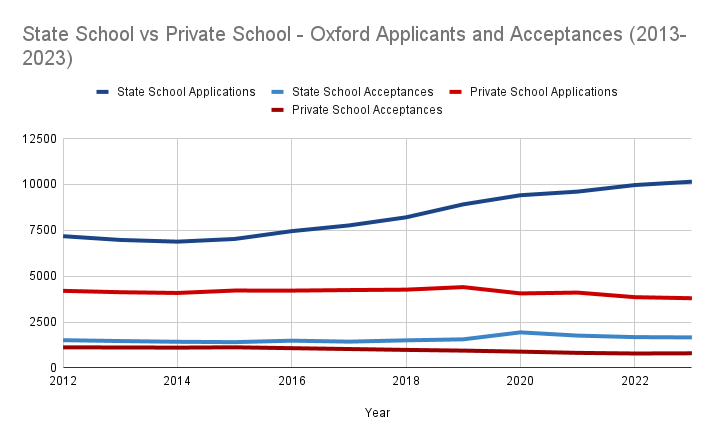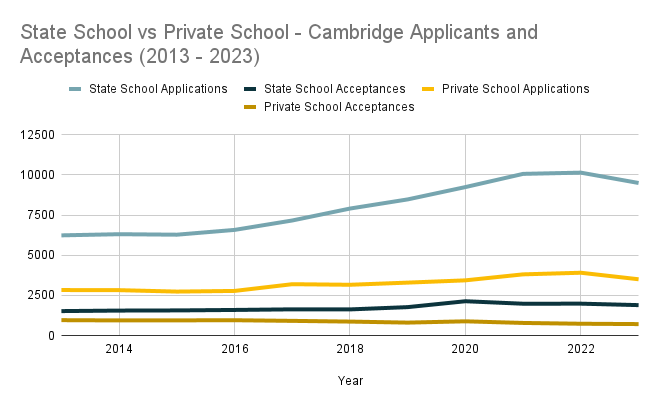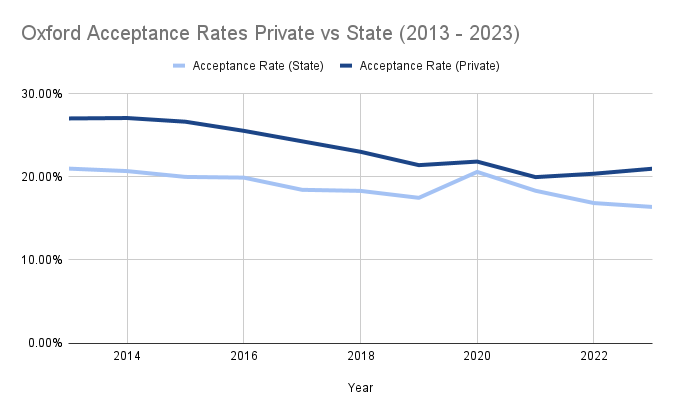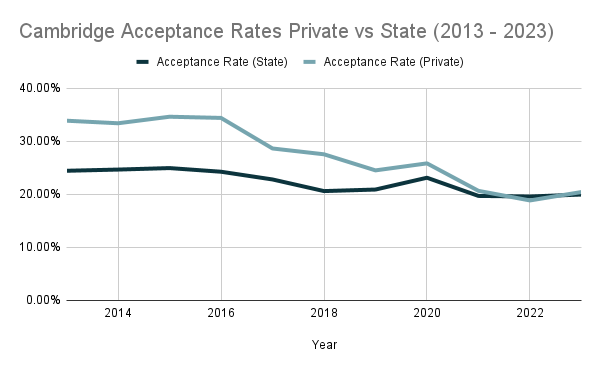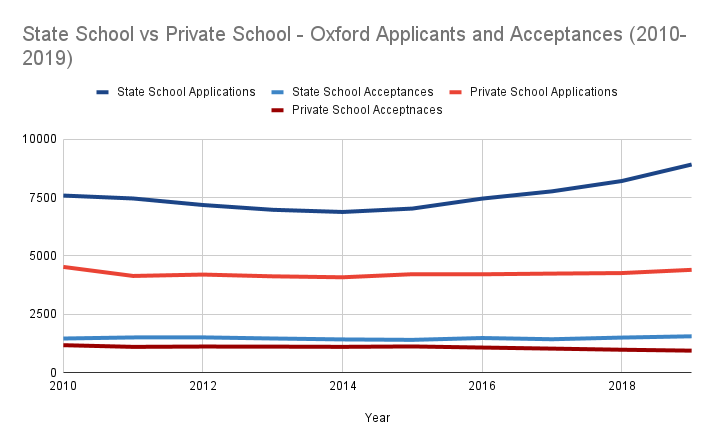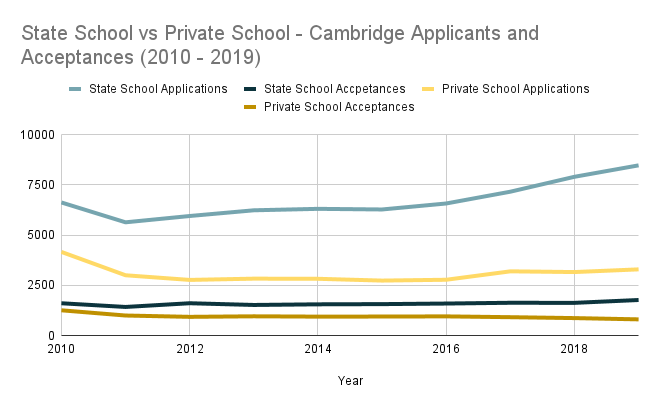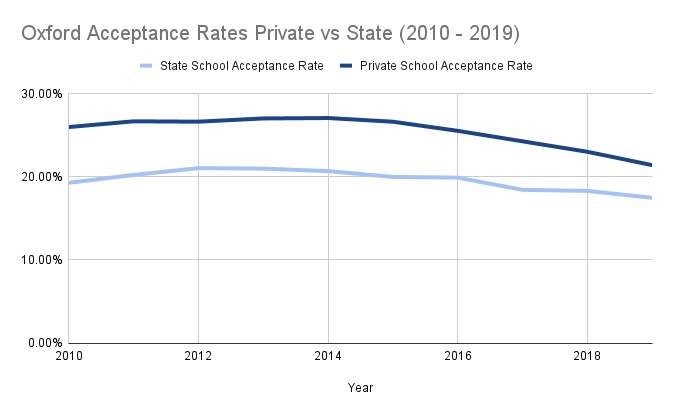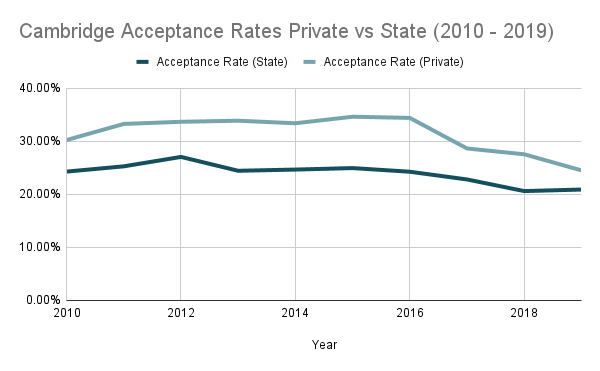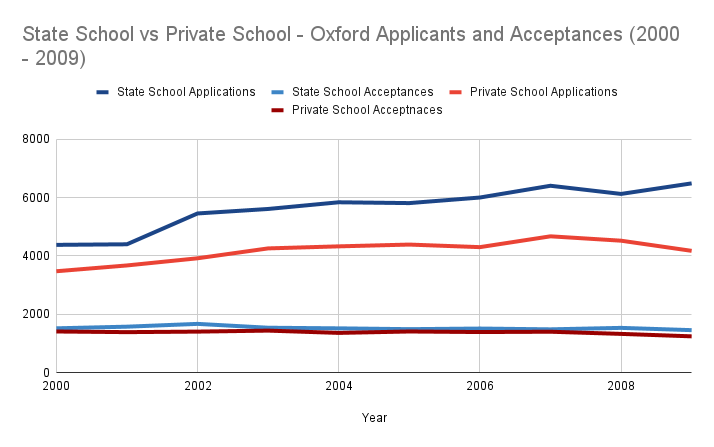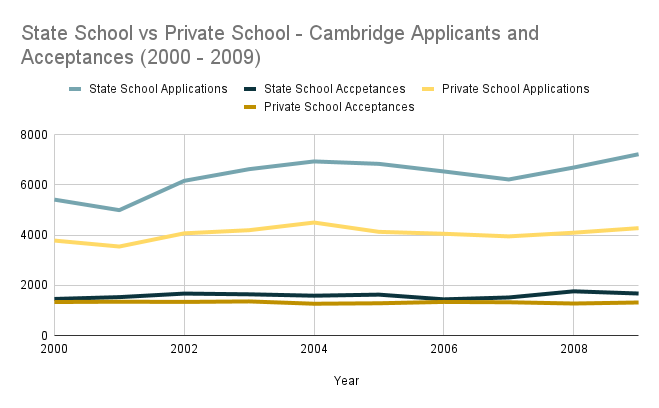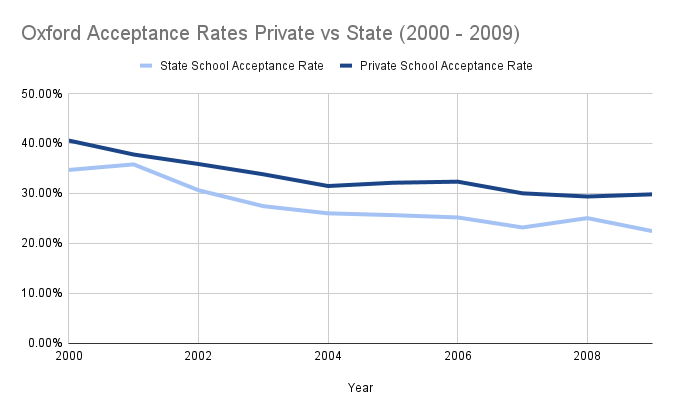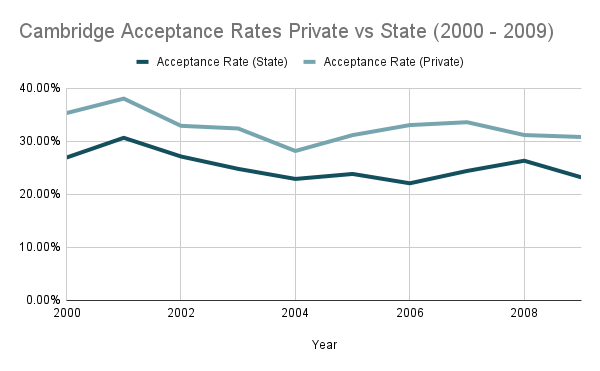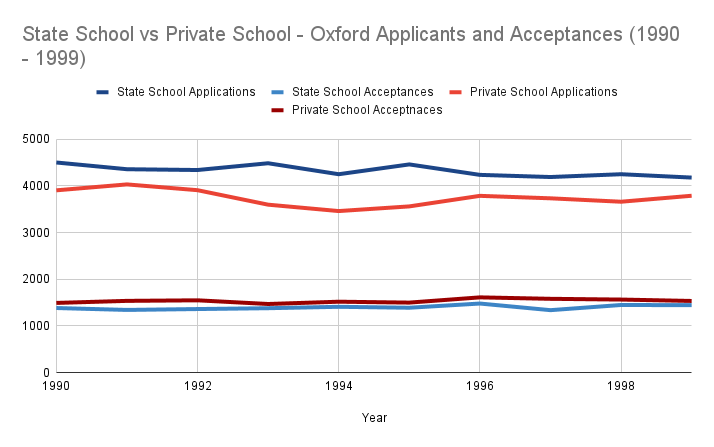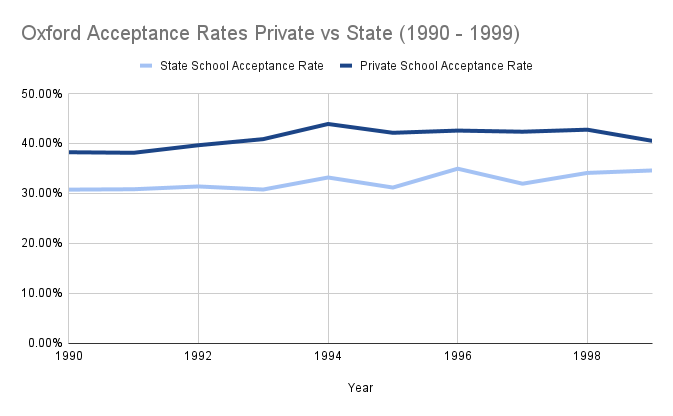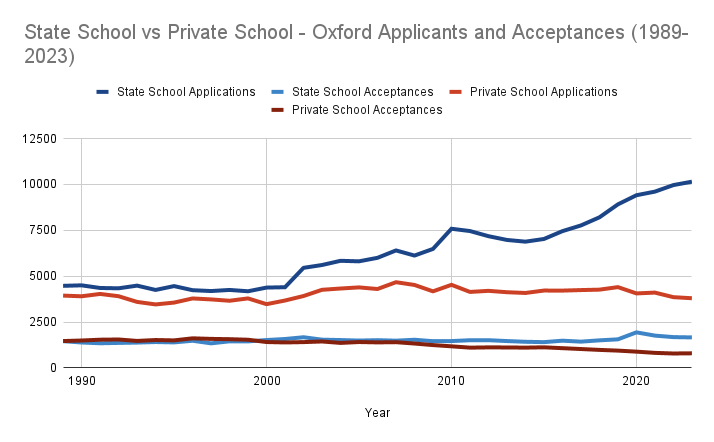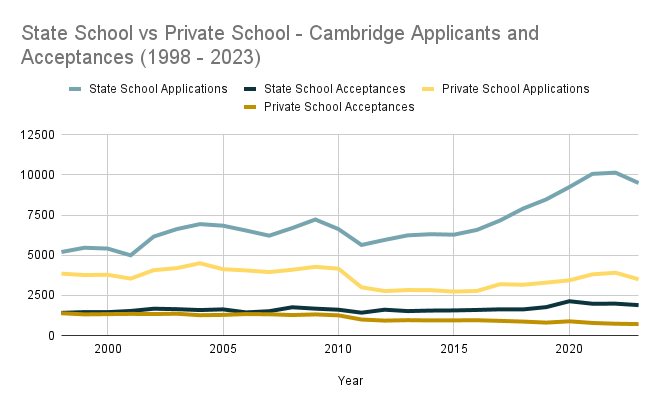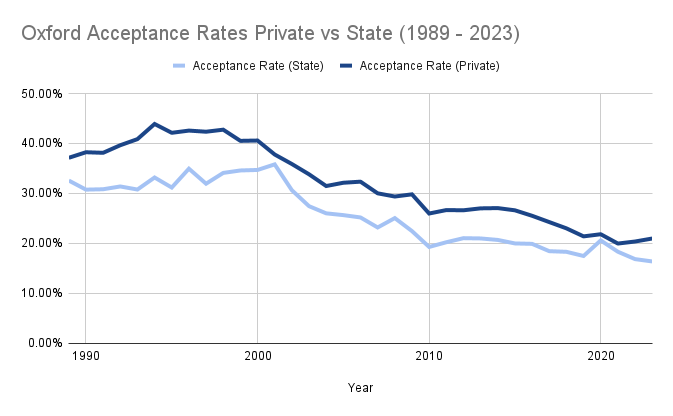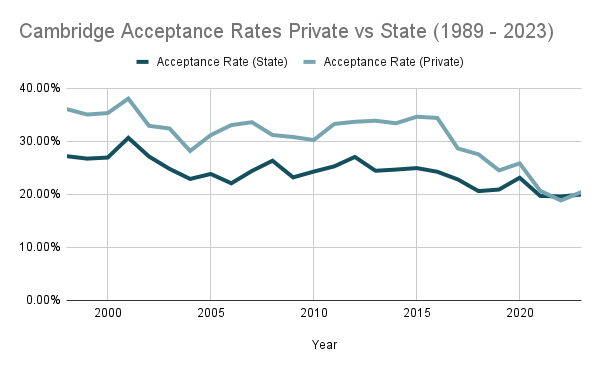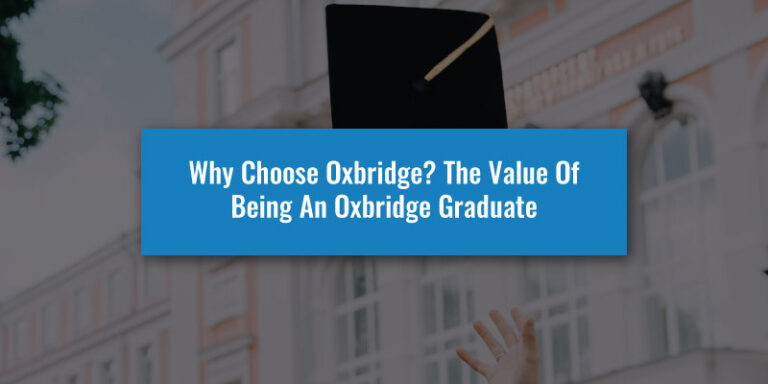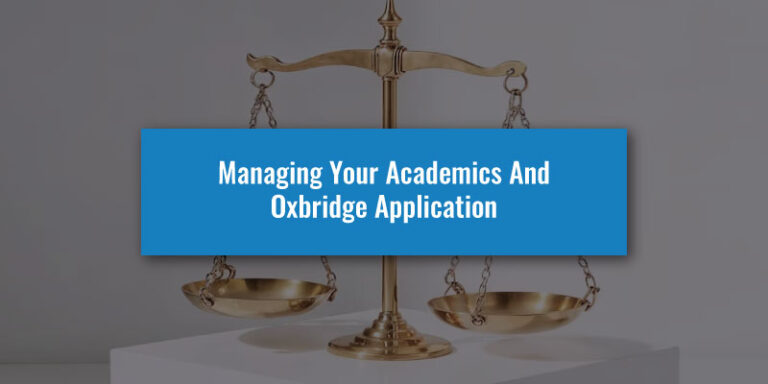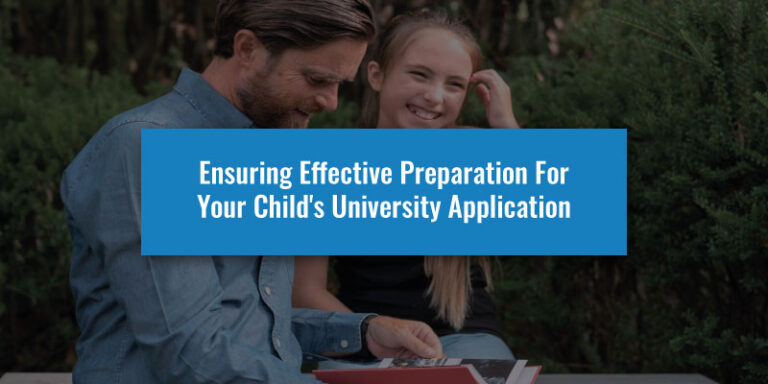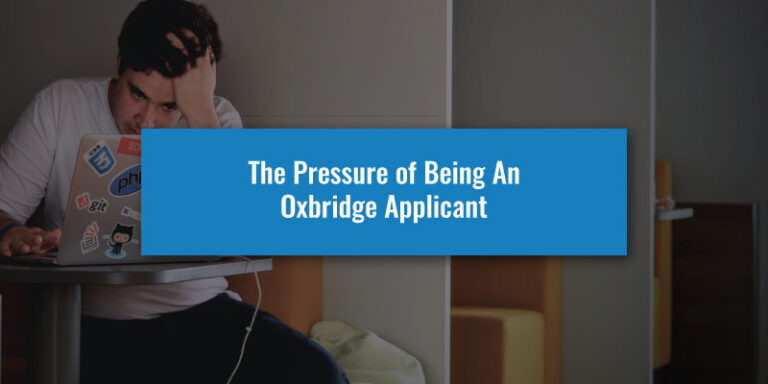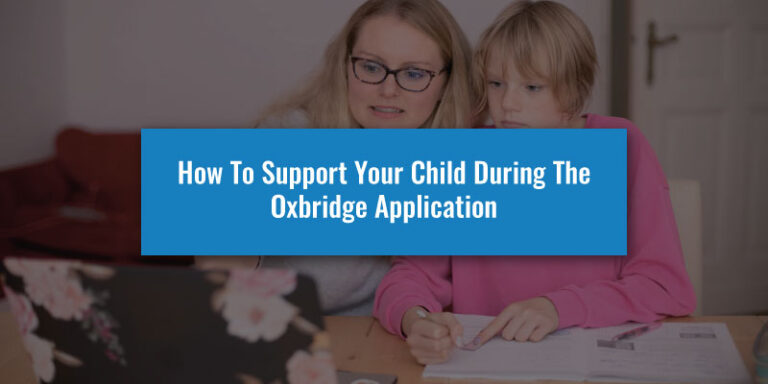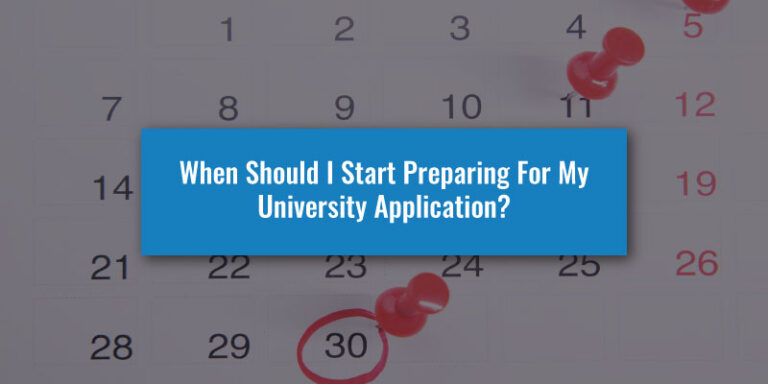Even in 2025, the myth that only privately educated students belong in Oxbridge exists. We’re here to dispel that myth.
No matter who you are, the transition from school to university is exciting and nerve-wracking in equal measure.
But for state-school students, the prospect of going to university – particularly a socially-accepted ‘good’ university, like Oxbridge or a Russell Group member – has its own set of exciting and nerve-wracking challenges.
Although it’s true a small group of independent schools such as Westminster School, Eton College and St Paul’s School have huge numbers of students receiving offers, this does not mean state school students are any less deserving of a place.
In this guide, we’ll explore some of the data behind this myth and hear from two successful state school applicants about why you shouldn’t let your educational background affect your confidence in your application. Plus, we’ll look at two important announcements that will have an impact on state and private school admissions moving forward; the removal of VAT exception for private schools and Cambridge’s plan to cut State School Admissions Targets. Let’s begin.
University of Cambridge Removes State School Admissions Targets
Previously, colleges were given the ‘shared responsibility’ of ensuring a certain percentage of students admitted were from a state school, which was set at around 69%. These targets were set back in the 2019/20 admissions cycle but were exceeded in the 2022/23 cycle with nearly 73% of admitted students being from state schools.
The idea behind this goal was to make admissions more fair and proportional, considering that 90% of UK students attend state schools. However, the decision was met with a fair amount of controversy both externally and within the university.
So five years after the target was originally put in place, the decision has been made to no longer consider applicants’ school type in isolation within their application. While school type will still be considered, a greater focus will now be on increasing student numbers from deprived and under-represented backgrounds, regions and ethnicities.
So with this in mind, we can already see that admissions for state school students have already been considered heavily over the last few years – a change that will have positively impacted those from that background. But with this announcement, will admissions once again become harder for state school students?
While there is no longer a threshold that Cambridge must meet for state school admissions, that doesn’t strictly mean that they are actively looking to decrease admissions. The primary point against the targets was that they appeared to be discriminatory against those from private schools.
Although the targets are gone, Cambridge is still hoping to keep their admissions process fair and proportional, as evidenced by their new initiative to boost admissions from underrepresented groups. Therefore, you should still remain confident in your application despite this change. At the end of the day, the most important factor is the quality of the application you have submitted, alongside your admissions test and interview.
Your background isn’t what defines your application, it’s the quality of the work you put in.
No matter your background, Oxbridge is looking for students who can excel in their learning environment. This can be difficult to demonstrate within your application, which is where UniAdmissions is here to help.
UniAdmissions’ Programmes are designed from the ground up by expert Oxbridge graduates who know the process inside out. Book a free consultation today to learn how you can enrol.
State School vs Private School Oxbridge: Admissions Data
The most definitive way to see how state school and private school students fare against each other at Oxbridge is to look at the application data for each university.
Oxford has admissions data dating as far back as 1989, while the data available for Cambridge starts in 1998, so we have a good range to work with. This data only covers UK Domicile applicants, so this isn’t the full pool of applicants for the year. Let’s first look at the data for 2023 (the most recent year available) to understand the current proportions of state school and private school applicants:
Oxford State School Application Statistics 2023
Applicants: 10,150
% of Total Applicants: 72.8%
Offers: 1,935
% of Total Offers: 69.3%
Acceptances: 1,662
% of Total Acceptances: 67.6%
Acceptance Rate: 16.4%
Oxford Private School Application Statistics 2023
Applicants: 3,797
% of Total Applicants: 27.2%
Offers: 858
% of Total Offers: 30.7%
Acceptances: 796
% of Total Acceptances: 30.4%
Acceptance Rate: 21.0%
Cambridge State School Application Statistics 2023
Applicants: 9,491
% of Total Applicants: 68.4%
Offers: 2,423
% of Total Offers: 70.9%
Acceptances: 1,895
% of Total Acceptances: 69.3%
Acceptance Rate: 20.0%
Cambridge Private School Application Statistics 2023
Applicants: 3,503
% of Total Applicants: 25.2%
Offers: 842
% of Total Offers: 24.6%
Acceptances: 716
% of Total Acceptances: 26.2%
Acceptance Rate: 20.4%
Although not quite proportional to the current UK statistics for state vs independent school students, we can see that a higher percentage of state school applicants are now being admitted, especially at Cambridge.
Also, bear in mind that the acceptance rates displayed are based on the number of applicants from each school type rather than the full applicant cohort. This gives us a more accurate view of how likely each applicant is to be successful within their own school group and allows us to compare proportions (as state school applicants will always have a higher acceptance rate because more are admitted each year).
So, things look fairly positive for state school applicants currently but has this been the case for long? Let’s now take a look at the last ten years to determine if any trends have formed in this time.
Oxford and Cambridge State School vs Private School Data (2013 - 2023)
What do these graphs tell us then? Firstly, we can see that applications from state school students have seen a drastic increase in the last decade. Oxford had 6,974 applicants from UK state schools in 2013, while 2023 was the first year where over 10,000 state school applicants applied. A similar increase can be seen at Cambridge, going from 6,234 in 2013 to 9,491 in 2023.
Despite this Oxford has actually seen fewer applicants from Private schools during this period. The university received 4,125 private applicants in 2013 and just 3,797 in 2023, over 400 less. Cambridge has seen an overall increase in private applications during this time (2,833 in 2013 to 3,503 in 2023), though 2023 saw a drop of over 400 private applicants compared to 2022 (3,909). However, this is fairly proportional to the drop in state school applicants seen in the same year.
As for acceptances, the changes haven’t been as steep, likely due to the cap on available places not increasing too much over this decade. However, the gap between state and private acceptances has grown wider since 2019, somewhat in tandem with the increase of state school applicants.
While this does show us that more state school applicants are being admitted into each university, it doesn’t show us if it’s actually getting easier for them to get their place or if private school applicants are more likely to be successful. To answer these questions, we’ll need to look at the acceptance rates:
Oxbridge State School vs Private School Acceptance Rates (2013 - 2023)
The clearest trend we can see here is that, for both universities, acceptance rates are going down across the board. Although more applicants are being admitted compared to ten years ago, this isn’t proportional with the increase in applications.
Comparing state schools and private school acceptance rates, Oxford has been the more stable of the two universities. Private school applicants were around 5% more likely to be successful in 2013, and while the gap has closed a bit, the state school acceptance rate is still lower by a similar amount.
The acceptance rates for the two became much closer in 2020 and 2021, which was also the case at Cambridge (likely caused by the changes in the process implemented during the COVID-19 pandemic).
However, while Oxford’s rates grew further apart following this, Cambridge’s acceptance rates became practically equal between the two school types. In fact, the state school acceptance rate was actually slightly higher in 2022, the first time that has ever been the case.
So despite a certain amount of inequality still being present in the admissions process, (mostly at Oxford), there’s no significant reason to believe that a competent state school applicant would have abnormally low chances of succeeding. However, to put this into perspective, let’s review all of the available data to understand how the admissions landscape has changed.
State School vs Private School Oxbridge: Historic Data
As stated before, we have data available as far back as 1989 which details the proportions of state school and private school applicants/acceptances. There’s too much data to place in this guide, so let’s break down the most important by decade to see how dramatically things have changed:
Oxford and Cambridge State School vs Private School Data (2010's)
Applications vs Acceptances
Oxbridge Acceptance Rates
The 2010s is when both universities began to see a sharp increase in state school applications. While the divide between state school and private school acceptances was getting wider during the latter half of this decade, the change wasn’t proportional to the increase in applications.
Acceptance rates had been subtly rising in the first half of the decade in line with a decrease in applications compared to 2010 (particularly at Oxford), but this trend was reversed by around 2015/2016, with Cambridge state school acceptance rates seeing an especially sharp drop in 2017. However, this drop mostly impacted private school applicants, although their acceptance rate was still higher than state school applicants.
However, based on the data, state school applicants still had a relatively fair chance of success during this decade.
Oxford and Cambridge State School vs Private School Data (2000's)
Applications vs Acceptances
Oxbridge Acceptance Rates
Applications were slightly more consistent in this decade, although there was definitely an upward trend when comparing 2000 and 2009. Oxford saw a greater increase in state school applications, receiving around 4,400 in 2000 and nearly 6,500 in 2009. We can also see a decrease in private school applicants starting from 2008.
Despite this, acceptances for state school applicants and private school applicants stayed mostly the same throughout the 2000’s. There was close to an equal proportion of each school type being represented in the cohort, with each university only admitting roughly 100 – 200 more students in many years. Cambridge has a wider gap between state and private acceptances, with a particularly large divide in 2008.
Oxford’s acceptance rate gradually decreased for both school types, while Cambridge’s was more erratic and ended at roughly the same level as the start of the decade. However, it’s clear that, despite the increase in state school applications, the proportion of acceptances between the two school types did not change much in this decade.
Oxford State School vs Private School Data (1990's)
We only have data from Oxford for this time period, so we will not be able to discuss Cambridge here:
So how were Oxford applications handled in the 90’s? Firstly, we can see that there were no major increases or decreases in applications across the decade. There were still generally around 500 more state school applicants each year (extremely proportional compared to the amount of state and private school students in the UK overall).
However, throughout the whole decade, more private school applicants were accepted than state schools (usually around 100 more). This then leads to an increased acceptance rate of around 10% for private school applicants.
This was the last decade in which private school students dominated Oxford, although we could estimate that this divide was even greater in the tears before these records began. This is mostly likely where the idea of Oxbridge only being for private school students came from, a stigma that the universities still haven’t fully shifted to this day.
However, it’s clear that the process has become more fair, so let’s review the full timeline to get a sense of how much progress has been made:
Oxbridge Applications vs Acceptances
Oxbridge Acceptance Rates
The most notable change is the drastic increase in state school applications, starting around 2012 – 2013 (Oxford also saw a separate increase from 2002 to 2010). However, the more subtle change is the stagnation of private school applicants and the gradual decrease in private school acceptances at both universities. Multiple factors caused a jump in state school acceptances in 2020 but wasn’t proportional to the application increase and has been going down again since.
As for acceptance rates, there has been a large divide between the two school types for most of the years recorded, though Cambridge is now closing this gap somewhat. Was this due to the state school targets they implemented back in 2020? And what will this graph look like now that these targets have been removed?
Generally, the data shows that the admissions process has improved for state school applicants, but those from private schools are still at a bit of an advantage, and additional data regarding schools, a similar trend to what was seen with female students at the universities. However, it seems those from certain schools will be at a great advantage:
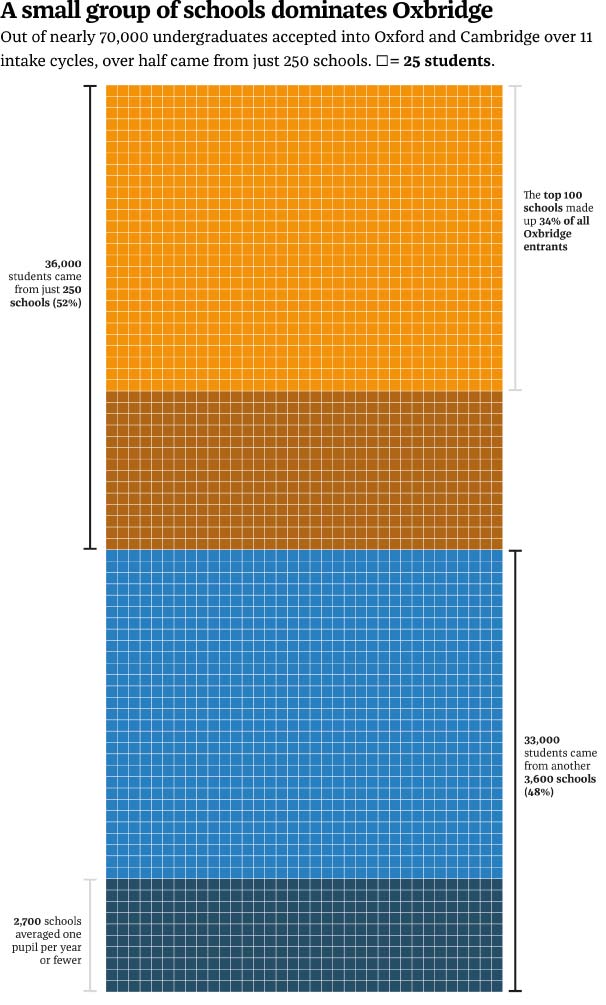
This data shows a slightly more worrying trend; students from the top 250 schools have a much higher chance of being admitted to Oxford or Cambridge. However, there are a few caveats to this.
Firstly, this data has been collected over the course of 11 admissions cycles and does not include the most recent cycles, which is when the push for fairer admissions really began. Secondly, it is worth noting that the top schools here are defined as the schools with the highest-performing students. While many of these are independent schools, that’s not the case for all of them.
However, this can still be somewhat disheartening to see if you aren’t from this background. However, changes are still being made to improve the fairness of the admissions process at Oxbridge, so you shouldn’t let any of this information put you off applying if your truly believe that you will be a good fit for the university.
However, this can still be somewhat disheartening to see if you aren’t from this background. However, changes are still being made to improve the fairness of the admissions process at Oxbridge, so you shouldn’t let any of this information put you off applying if your truly believe that you will be a good fit for the university.
Access "The Oxbridge Application Vault"
- 300+ page ebook for Oxbridge Applicants
- 25 page ebook for Personal Statement
- 2h+ online course to succeed in any exam
- Online Oxbridge Success Calculator
- 12 page ebook about UniAdmissions
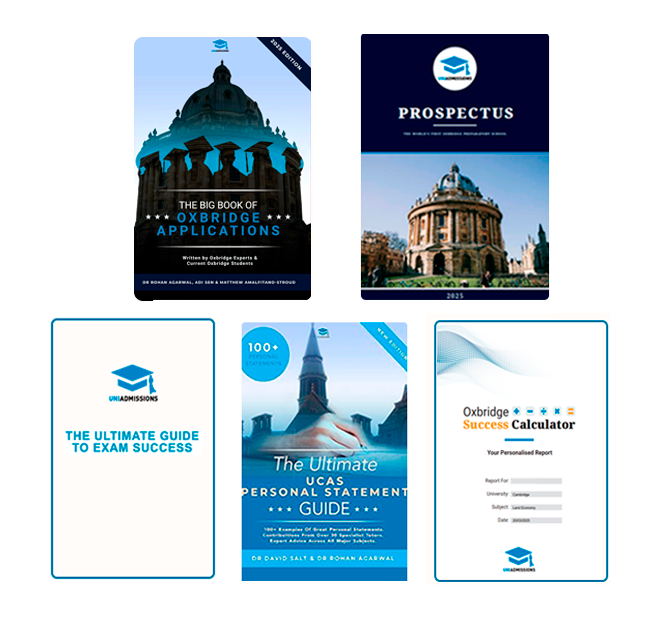
Access "The Big Book Of Oxbridge Applications" For FREE
Considering at Cambridge or Oxford? Download The Big Book Of Oxbridge Applications for free here to discover everything you need to know about the Oxbridge application process and what it’s like to study there. Through over 350 pages, you’ll find:
- Over 40 admissions test practice questions
- 28 example Oxbridge Personal Statements
- Interviews with Oxbridge students and graduates
- Additional downloadable resources
Fill in your details below to claim your digital copy today!
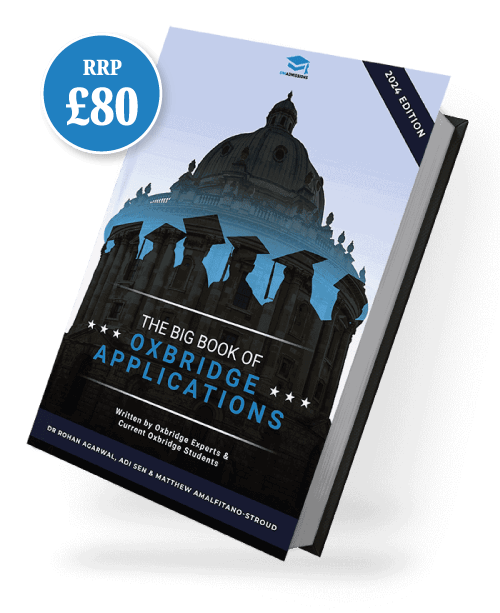
Private School VAT Exemptions: How Could This Affect Oxbridge?
It was recently announced that the government will be removing the charitable status of all UK private schools in 2025, meaning they will no longer be exempt from the 20% VAT charge on their operations. Naturally, this has left many in the private school sector worried, as well as many parents and students who could be affected by this.
The requirement to pay 20% in VAT all but guarantees that private schools will have to increase their fees by a similar amount. With the average cost per term for day students sitting at around £7,000, this increase will cost families thousands of extra pounds each year; a price that some will not be able to pay.
Because of this, we are likely to see a mass exodus of students moving from private education to state education. As well as the potential issues this could cause to both parts of the education sector, this will also affect how Oxbridge admissions look over the next few years.
As more students move from private to state education, we are likely going to see a decrease in acceptances for private school students and the opposite for state schools. On paper, this may indicate that applications are favouring state schools even more, but this won’t be the case considering the context behind the data.
This change in how private schools operate may leave a permanent impact on the distribution of private and state school students at Oxbridge, which has already been changing in favour of state schools. However, it’s also important to consider why private school applicants generally have a higher chance of success.
While private schools generally have higher standards of education, this isn’t true across the board, and the higher success rates from private school students may actually come down from the additional support they receive. Private schools have more resources to provide dedicated support from Oxbridge applicants, which is naturally going to increase an applicant’s chance of earning a place.
This type of support is rarer in state schools, but this doesn’t mean that state school students are less competent or intelligent. Instead, if dedicated Oxbridge support is obtained outside of school, he average state school applicant will be far more competitive and on the same level (if not higher) than the average private school applicant.
However, we’re currently assuming that acceptances will increase/decrease with the natural rise/drop of state school and private school applicants. It may be that the number of acceptances from each school type remains the same, meaning the same amount of private school students will be admitted from a smaller pool of applicants. If this is the case, acceptance rates will once again split, with private school applicants being much more likely to succeed within their cohort.
Despite this, state school applicants still have a more favourable chance of being admitted overall, even if the competition is tougher. To help reassure you, we’ve put together two state school student’s experiences with the application process. Don’t be put off because you didn’t go to a selective or private school – you are no less “Oxbridge material” than any other student!
Oxbridge State School Case Studies
STATE SCHOOL STUDENT #1: MEDICINE AT OXFORD
Worried that you’ll be at a disadvantage applying from a state school?
There’s no need to stress. It’s definitely achievable; I’ve had first-hand experience to debunk this myth!
“Don’t worry, I know the feeling… that feeling that everyone else at the interview has had loads of specialist help with their interview practice.”
They’ve had tons of UCAT preparation and help with their Personal Statement.
They’ve all arrived together on the school bus and have connections to Oxford or Cambridge through hundreds of ex-pupils passing through the institutions.
It can be easy for these thoughts to get into your head a stop you from performing to the best of your ability. However, myself and plenty of others have been there and are the living proof that you can do it and you have nothing to worry about when looking at your educational background.
I grew up in Northumberland and went to the local state schools (First School, Middle School and High School in the system we have up there) throughout my childhood.
I was the only person applying for Oxbridge or Medicine in my year, so I guess you could say I maybe didn’t have the support in applying that others did. This was probably best highlighted when I spoke to the teacher in charge of admissions about my upcoming UCAT test and she replied with ”What’s the UKCAT?” (This was what it was called when I applied.)

Stupid drawings aside, I feel that this has in no way disadvantaged me, and if anything, has given me the resilience and gung-ho attitude with which I’ve approached university and beyond.
I researched and prepared for these entrance exams throughout year 12 – much to the confusion of my friends who had no idea what I was working for.
I managed to get interviews at Oxford, Sheffield and Leeds and received offers from the first two of these. I’m now studying for my 3rd-year exams at St Catherine’s College at Oxford.
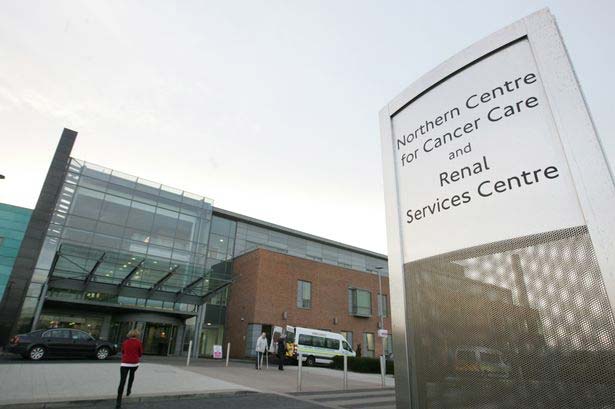
Luckily, I was able to get limited work experience through family friends, which proved to be invaluable, which brings me to my vital tip!
"Don't be afraid to ask people you vaguely know or your parents used to know for work experience!"
They’ll most likely be more than happy to help, especially if you’re polite, create as little extra work for them as possible and buy them a nice bottle of wine at the end of it (let’s face it, who doesn’t that work on…)
Universities are well aware that access to work experience is very school-dependent so don’t worry. If you’ve shown that you’ve tried your absolute best to get medical exposure and show real thought about the little you have seen (top tip – be humble about this stuff!), this is all they can ask for.
The same goes when looking at GCSE grades and other marks they look at in the application process – you will not be disadvantaged for your educational background and there are plenty of access resources in place to ensure you’re not, so be sure to search for these online.
STATE SCHOOL STUDENT #2: CAMBRIDGE
The beginning of my story…
When I was applying for university, I didn’t have any resources like UniAdmissions to help guide me through the thorny path of personal statements and interviews.
My mock-interview for Cambridge involved my sixth form tutor asking me questions like “Would you prefer a book or a Kindle?” without any reference to written work I had submitted, or my personal statement; questions that clearly have no place in an Oxbridge interview.
I was the first in my family to even contemplate applying for university.
The fact that you’re currently reading this blog post – means you’ve already been more proactive than I had been.
But that doesn’t mean you’re not experiencing the same fears and concerns that plagued me all throughout Year 12 and 13.
Now that I’ve come out the other side of the university experience, I’m here to reassure you of two things;
- No matter how many self-defeating doubts you might entertain, the admissions system (particularly for Oxbridge) is designed to level the playing field.
- If you’re even slightly entertaining the prospect of applying to Oxbridge, you’re good enough and you should apply.
Of course, both of these bullet points are purposely broad.
I’ll go into a bit more detail about both of them now… but read them. Read them again.
It’s easy to buy into the myth that Oxbridge is unattainable if you haven’t studied Latin at GCSE, or if you don’t know anyone who has been to university, even if your state school is a good and high achieving one.
But it’s not true.
Oxbridge aren’t looking for the finished product. All they want is someone who is passionate and engaged about the subject, and who wants to talk about it in a formal setting.
Whilst it’s true that most everyone who applies to Oxbridge entertains these doubts about whether they are ‘good enough’, in my experience it’s a very specific experience to a state-educated student.
Oxbridge can seem like a mythical, alien system – but it’s just another university.
The Oxbridge interviews are designed to coax students out of any pre-coaching they may have been given by their school.
Most of the courses will also have some form of formal or informal test as part of the interview package.
UniAdmissions is the perfect resource for preparing for both the exams and the interviews, from tutors who have experienced them first-hand: this goes some way to redressing the balance between the resources different schools can offer.
Whilst these resources are absolutely something you should tap into, you should also have faith in all the skills you’ve already naturally picked up, even if you don’t know it. You’re smart, you’re engaged, you’re an independent learner, you’re ambitious. It’s these traits that will stand out in the interview.

To get the chance to study at Oxford or Cambridge at all, you need to put yourself out there!
Whilst the admissions rates of private to state school students have improved over the years, Oxford and Cambridge are still in need of more talented, driven state school students in their system, and this will never not be true. If you’re considering it, don’t overthink it.
Simply apply. We have a comprehensive guide on how to get into Oxbridge if you’re looking for additional reading.
Looking for application support to receive your dream university offer?
We help you craft the perfect Personal Statement, achieve a highly competitive Admissions Test score and teach you how to Interview effectively – covering all areas of your university application.
Discover our University Premium Programmes by clicking the button below to enrol and triple your chances of success.

